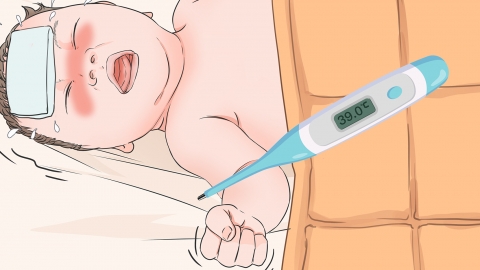How to perform physical cooling for a child with fever
Febrile refers to fever. Generally, physical cooling methods such as reducing clothing coverage, wiping the body with warm water, applying cold compresses to the forehead, ensuring sufficient fluid intake, and adjusting the indoor environment can be used to reduce a child's fever. Detailed explanations are as follows:

1. Reduce clothing coverage: Appropriately reduce the child's clothing and bedding to avoid excessive wrapping that may hinder heat dissipation, allowing the body to cool naturally. Ensure the limbs remain warm to prevent chill, especially adjusting clothing thickness after the initial chills phase of fever.
2. Wipe the body with warm water: Use a towel soaked in warm water at 32-34°C to wipe areas rich in blood vessels, such as the child's neck, armpits, and groin. Heat is removed through water evaporation. Each wiping session should last about 10-15 minutes. Avoid using alcohol to prevent skin irritation.
3. Apply cold compress to the forehead: Place a damp towel, wrung dry, on the child's forehead and replace it every 5-10 minutes, or use a fever patch on the forehead. Local cooling helps reduce head temperature and alleviate discomfort caused by fever.
4. Ensure sufficient fluid intake: Encourage the child to drink more warm water, mild salt water, or oral rehydration salts to replenish fluids lost during fever, promote sweating and urination, accelerate heat dissipation, and prevent dehydration, which may hinder lowering body temperature.
5. Adjust the indoor environment: Maintain good indoor ventilation and keep room temperature between 24-26°C. Avoid high ambient temperatures that may hinder heat dissipation. A fan can be used to improve air circulation, but ensure it does not blow directly onto the child's body to avoid chill and worsening of discomfort.
Physical cooling is suitable for cases with body temperature below 38.5°C or when antipyretic drugs are not appropriate. During the process, closely monitor the child's mental state and body temperature changes. If the body temperature continues to rise above 38.5°C after physical cooling, or symptoms such as lethargy or convulsions occur, seek medical attention promptly to avoid delaying treatment.








